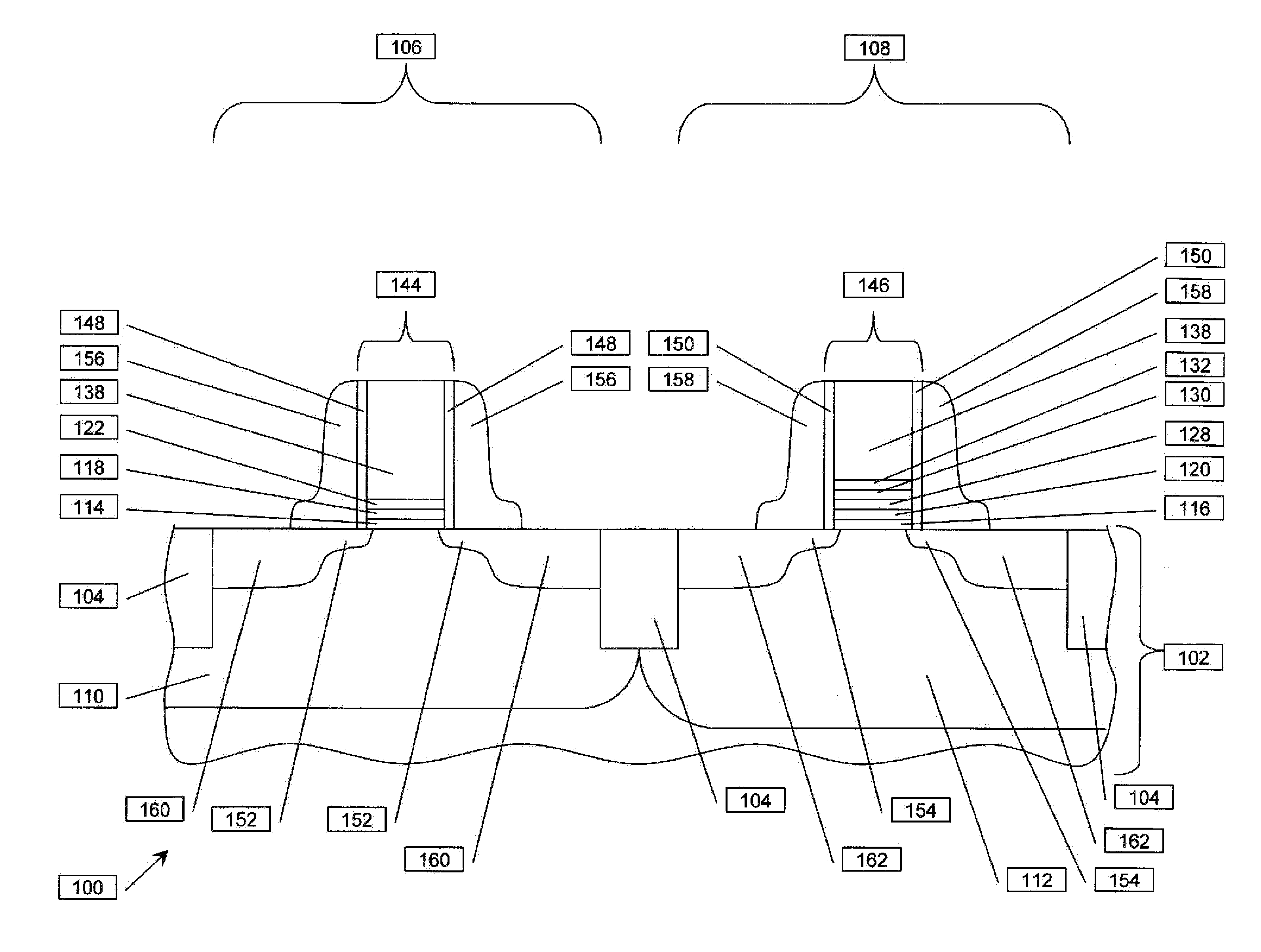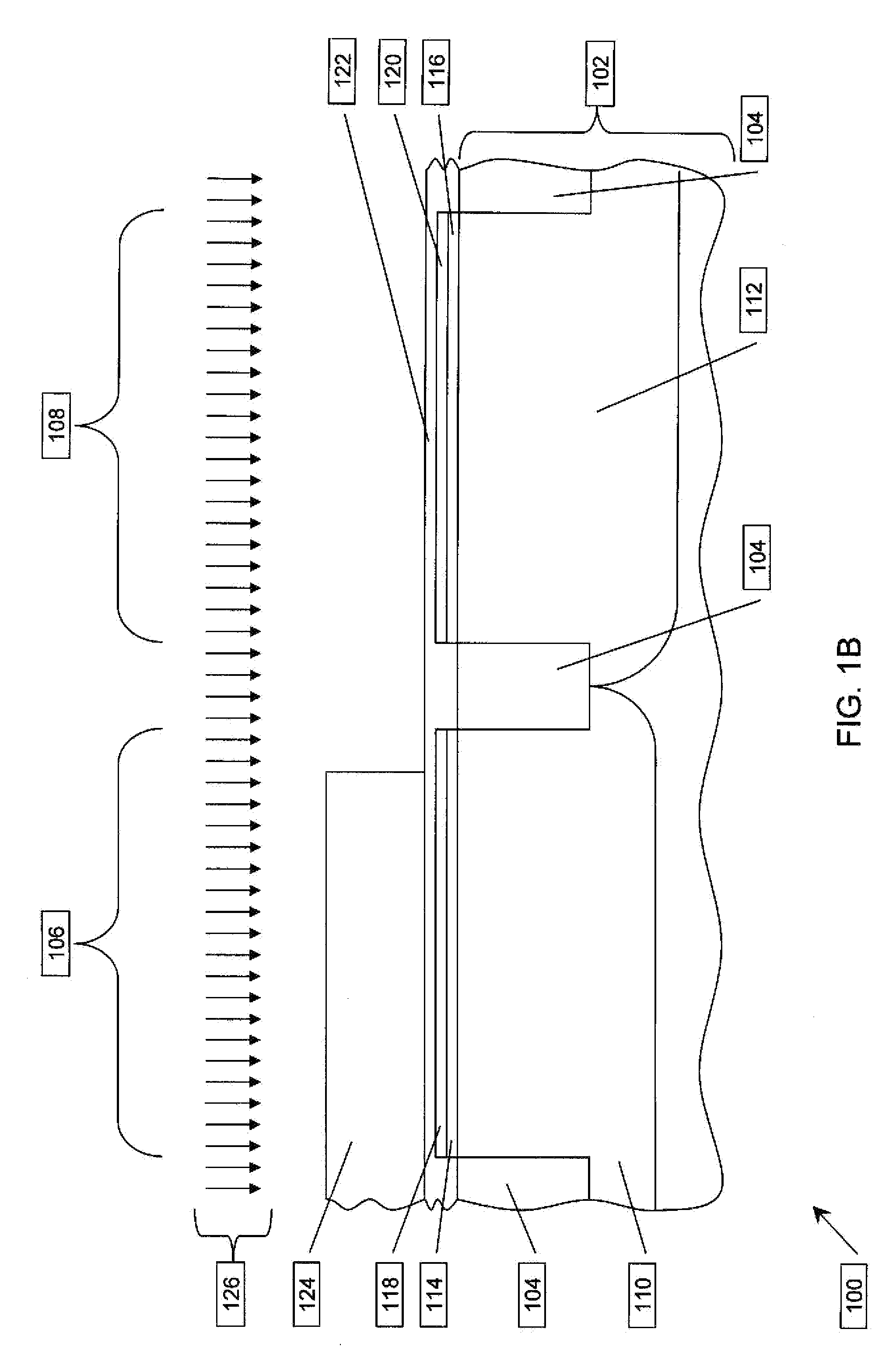Engineered oxygen profile in metal gate electrode and nitrided high-k gate dielectrics structure for high performance pmos devices
a technology of dielectric structure and metal gate electrode, which is applied in the direction of transistors, electrical devices, semiconductor devices, etc., can solve the problems of less performance than desired from metal gate pmos transistors, and achieve the effects of reducing the threshold increase of pmos transistors, reducing oxygen diffusion, and reducing gate depletion effects
- Summary
- Abstract
- Description
- Claims
- Application Information
AI Technical Summary
Benefits of technology
Problems solved by technology
Method used
Image
Examples
first embodiment
[0017]FIG. 1A through FIG. 1J are cross-sections on an IC containing the instant invention formed by a planar fabrication process sequence, depicted in successive stages of fabrication. Referring to FIG. 1A, the IC 100 is formed on a substrate 102 which is commonly a single crystal silicon wafer, but may be a silicon-on-insulator (SOI) wafer, a hybrid orientation technology (HOT) wafer with regions of different crystal orientations, or other material appropriate for fabrication of the IC 100. Elements of field isolation 104 are formed at a top surface of the substrate 102, typically of silicon dioxide between 250 and 600 nanometers thick, commonly by shallow trench isolation (STI) or local oxidation of silicon (LOCOS) processes. In STI processes, silicon dioxide may be deposited by high density plasma (HDP) or high aspect ratio process (HARP). An element of field isolation 104 separates a region in the IC 100 defined for an n-channel metal oxide semiconductor (NMOS) transistor 106 f...
second embodiment
[0032]FIG. 2A through FIG. 2H are cross-sections on an IC containing the instant invention formed by a gate replacement fabrication process sequence, depicted in successive stages of fabrication. Referring to FIG. 2A, the IC 200 is formed on a substrate 202 which has the properties described in reference to FIG. 1A. Elements of field isolation 204 are formed in the substrate 202 as described in reference to FIG. 1A. An element of field isolation 204 separates a region in the IC 200 defined for an NMOS transistor 206 from a region in the IC 200 defined for a PMOS transistor 208. A p-well 210 is formed in the substrate 202 in the NMOS region 206, as described in reference to FIG. 1A. Similarly, an n-well 212 is formed in the substrate 202 in the PMOS region 208, as described in reference to FIG. 1A. An NMOS gate dielectric layer 214 is formed on a top surface of the p-well 210, with the properties described in reference to FIG. 1A. A PMOS gate dielectric layer 216 is formed on a top s...
PUM
 Login to View More
Login to View More Abstract
Description
Claims
Application Information
 Login to View More
Login to View More - R&D
- Intellectual Property
- Life Sciences
- Materials
- Tech Scout
- Unparalleled Data Quality
- Higher Quality Content
- 60% Fewer Hallucinations
Browse by: Latest US Patents, China's latest patents, Technical Efficacy Thesaurus, Application Domain, Technology Topic, Popular Technical Reports.
© 2025 PatSnap. All rights reserved.Legal|Privacy policy|Modern Slavery Act Transparency Statement|Sitemap|About US| Contact US: help@patsnap.com



